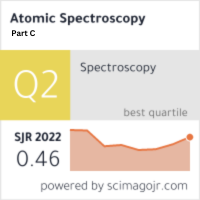Nano-Biofertilizers Synthesis and Applications
Keywords:
Chemical Engineering, Nanotechnology; Nanomaterials; Biosynthesis; Nanofertilizers, Biofertiliser.Abstract
Green chemistry and nanobiotechnology have great potential for generating new and significant products that are favorable to the environment, industry, and consumers. The nanoforms of metals and nanocomposites are more effective and efficient agents than their bulkier counterparts because of their distinctive physical, chemical, and optical properties. Green technology is a rapidly growing scientific field that has recently received attention due to its many applications. Different nanoparticle dimensions, sizes, and bioactivities will develop as a consequence of changes in the biomaterials employed for synthesis. The existing understanding of several green synthesis methods, that depend on different plant components and microorganisms for the production of nanoparticles, is summarized in the current review. Employing these materials minimizes synthesis costs while minimizing the use of hazardous chemicals and promoting “biosynthesis.” To produce metal nanoparticles efficiently, bio-reduction is influenced by the abundance of essential enzymes, proteins, and biomolecules. Rapid biosynthetic regeneration makes this characteristic sufficient for their employment in a range of situations. In this review, we explore the biosynthesis of nanomaterials and their potential in sustainable agriculture. Biosynthesized nanofertilizers, or bionanofertilizers, are a revolutionary new class of fertilizer that has been developed with the help of nanotechnology. These fertilizers offer many advantages over traditional fertilization methods and can be used to increase crop yields while reducing the environmental impact of fertilizers. Bionanofertilizer are an inexpensive way to increase plant growth and production, and to improve the use of nutrients by plants and the health of the soil. According to our survey, nanotechnology presents a wide range of prospects by offering a cutting-edge and environmentally friendly alternative in the agricultural sector.



